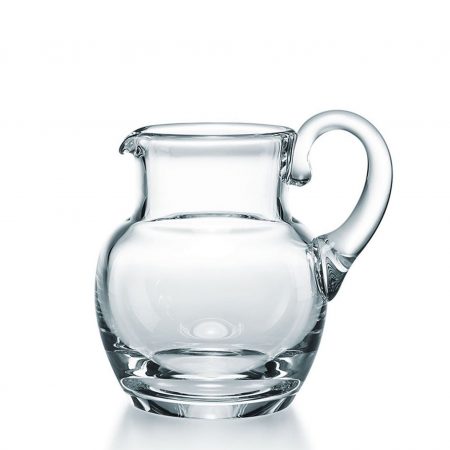BACCARAT MILLE NUITS LARGE PLATE
SKU: 2605862BACCARAT MILLE NUITS LARGE PLATE
The Mille Nuits plate has cleverly rippled edges, like a brisée pastry: an extraordinary frame that, with its grooves, sums up Baccarat’s refined craftsmanship.
midnight cod. 2605861, cm 20
Product not available
Product not available
270,00€ Original price was: 270,00€.190,00€Current price is: 190,00€.
BACCARAT MILLE NUITS LARGE PLATE
Some Curiosities
Baccarat is a French municipality located in the department of Meurthe and Moselle in the Grand East region. The inhabitants are called Bachamois.
It was this town that gave its name to the crystal that has been produced here since the 18th century using the technique created by Aimé-Gabriel d’Artigues.
The history of Baccarat crystals began in 1764,
when Louis de Montmorency-Laval, Bishop of Metz, asked King Louis XV of France to open a factory for the production of glass, because at the time he had to obtain supplies in Venice or Bohemia; authorisation by royal decree came on 16 October 1764. Thus, in the village of Baccarat in Lorraine, on the banks of the Meurthe river, the Verrerie Sainte Anne was born. The glassworks was taken over in 1816 by the entrepreneur Aimé-Gabriel d’Artigues, former owner in Belgium of the Cristalleria Vonèche, who moved all production to Baccarat. From this moment on, the Verrerie specialized in crystal processing, becoming after a few years the first crystal factory in France, with prestigious orders from King Louis XVIII, then Charles X and Louis Philippe.
During the Restoration period,
many innovations are made, new processes are created and special colors (such as the famous golden red), awarded over the years by awards and gold medals. Initially, Baccarat also supplied its crystals to external artists, including Madame Désarnaud, the first to have the audacity to make furniture entirely in crystal, such as the toilet table of the Duchess of Berry, which she made to a design by Nicolas-Henry Jacob (1782-1871, a pupil of David), now at the Louvre. Madame Désarnaud, Charpentier’s widow, had run her husband’s company with great passion and entrepreneurial spirit.
Even today they can be admired at the Musée d’Orsay in Paris and it was during the Universal Exhibition of 1823 that the Baccarat brand was revealed to the world. There are commissions from kings and emperors. Like the Harcourt chalice, the symbol of the company and still in production, created in 1841 for King Louis-Philippe of France, engraved with the royal monogram and the characteristic ruby red button obtained by progressive fusion at a temperature of five hundred and forty degrees of the crystal and gold powder.
At the beginning of the 20th century
Baccarat produces the first bottles of perfume. The Sillage de la Reine, the perfume recently recreated on the basis of that used by Marie Antoinette, is also contained in a bottle of Baccarat crystal. In 1948, Soleil, a large clock with crystal rays, was designed. Designed by George Chevalier, it is inspired by the symbol of the Sun King (used for the gates of the Palace of Versailles). The first buyer of the precious object was Arthur Miller, who chose it to decorate his apartment in Manhattan, at the time of his marriage to Marilyn Monroe. In 1956 two bottles with initials in pure gold were made for the wedding of Prince Rainier of Monaco and Grace Kelly.
| Brand |
|---|
You may also like…
Related products
-

VENINI
Yemen vase Venini
2.590,00€ -
Sale!

KOSTA BODA
Kosta Boda VASE 80150
350,00€Original price was: 350,00€.175,00€Current price is: 175,00€. -

LALIQUE
Lalique Baccanti Vase
4.500,00€ -
Sale!

CARLO MORETTI
Carlo Moretti Large Numered Vase
600,00€Original price was: 600,00€.450,00€Current price is: 450,00€.



